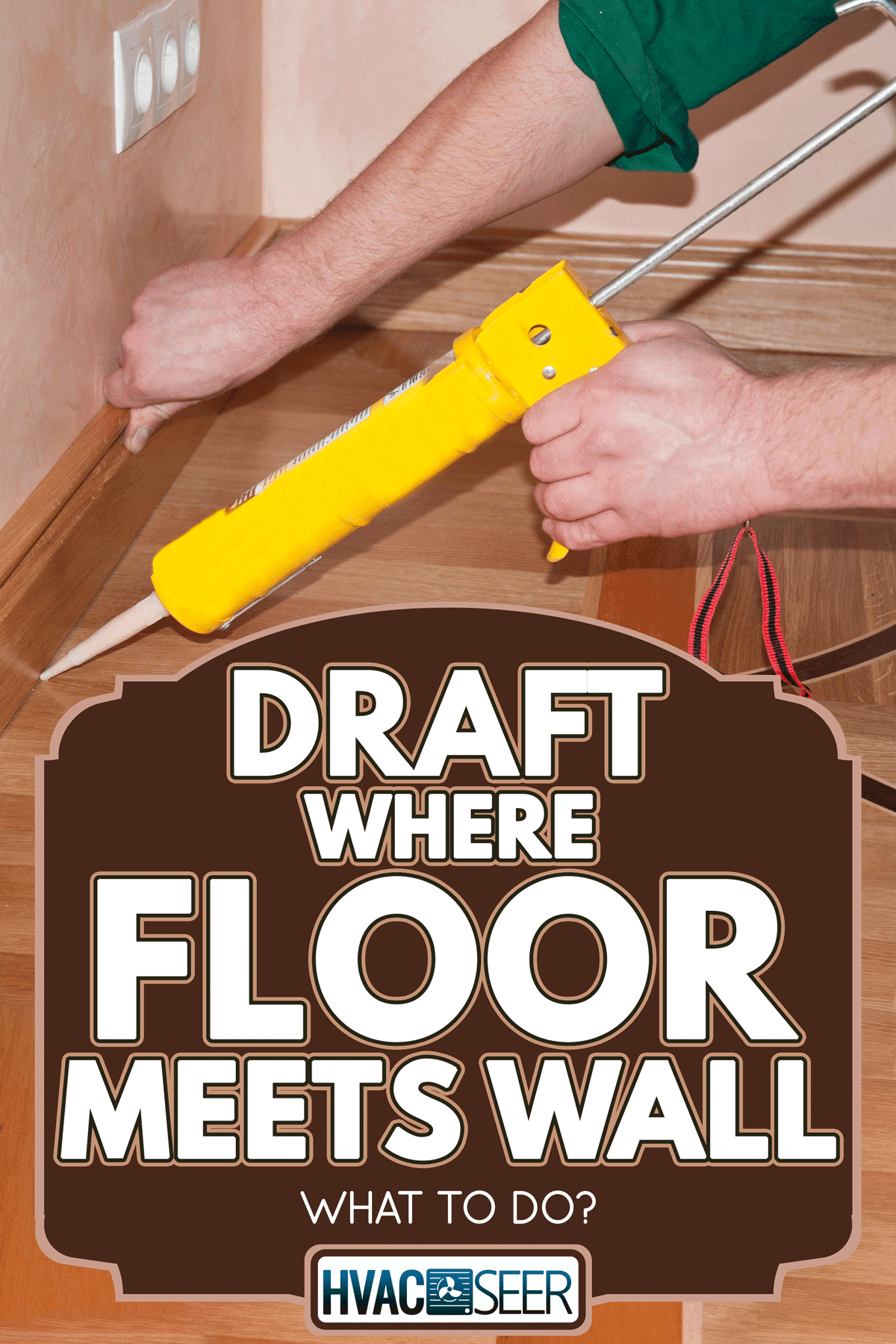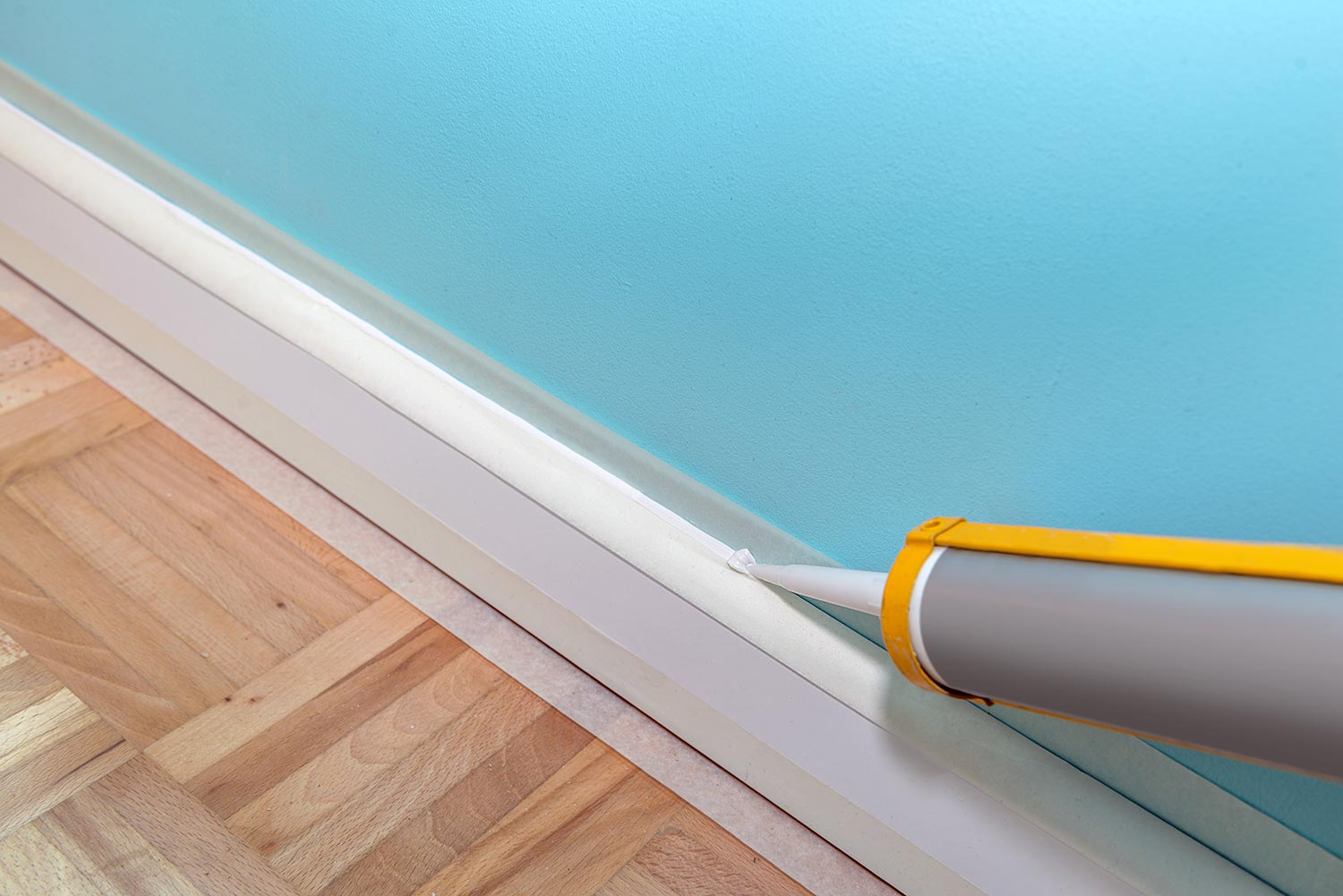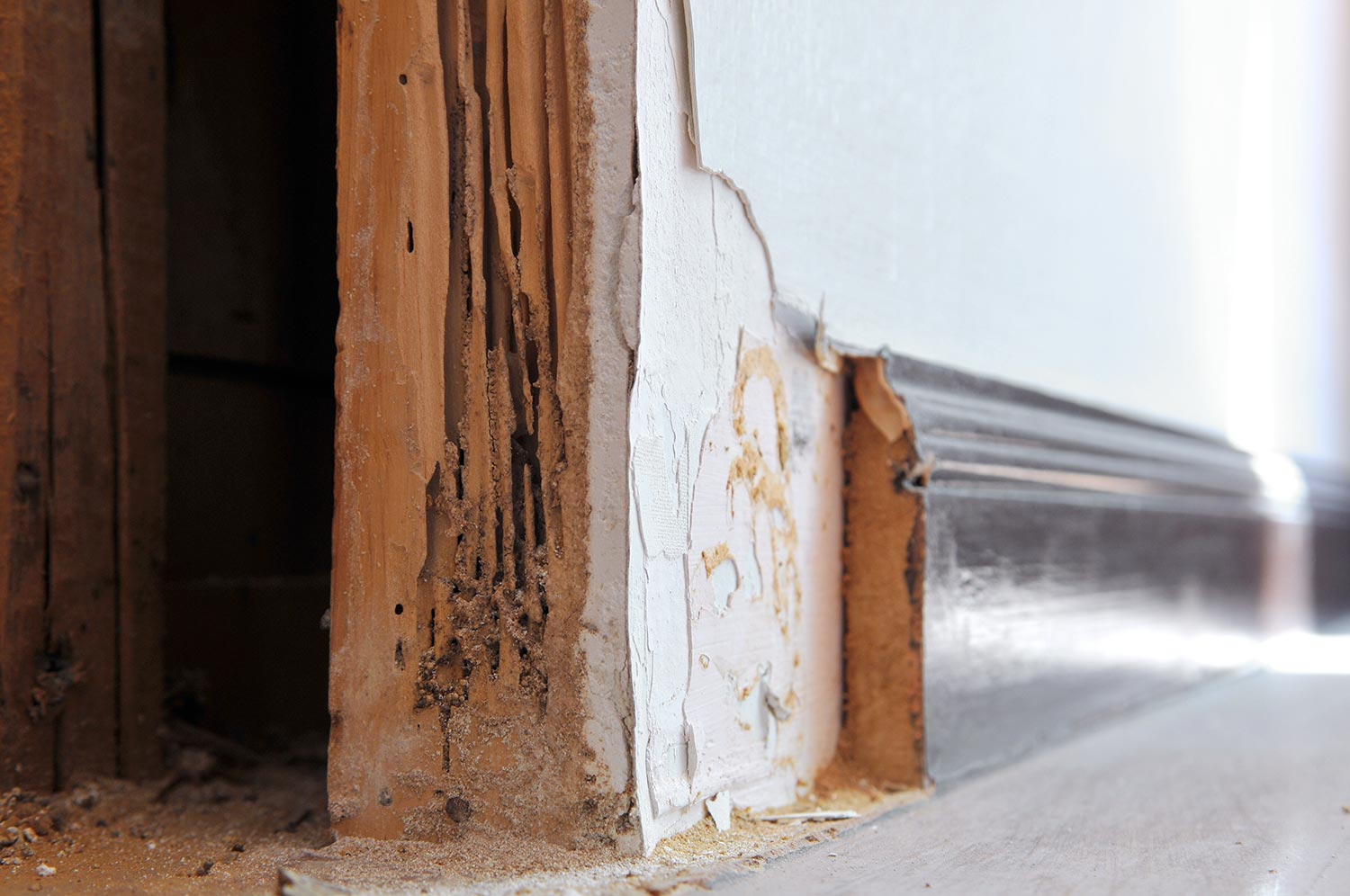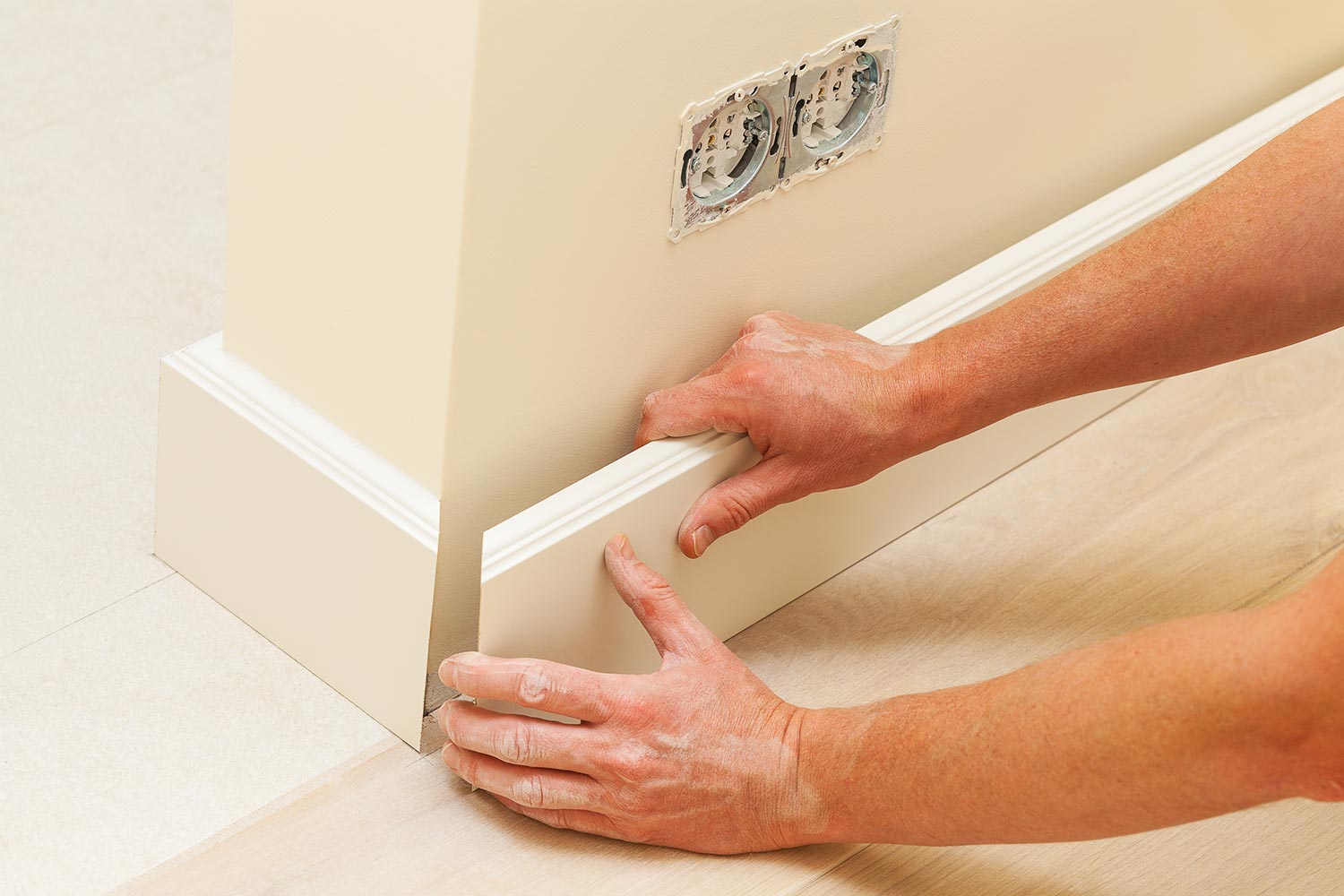Did you recently notice a draft coming from where the floor meets the wall, and you want to know what you can do about it? You’ve come to the right place, for we have researched this question, and we have the answer for you.
Here is the condensed version of the steps to seal the gap where the floor meets the wall:
- Identify the exact location of the gap.
- Clean the area that will be sealed.
- Use silicone caulk to seal the gap.
- Spread the caulk with a caulking tool.
- Let the caulk dry for 24 hours.
Sealing the leak is just the first part of the solution. The second part is identifying if any underlying issues created the gap. Proceed to the succeeding sections to get the detailed steps of sealing the air leak and to learn how to determine if there is a possible underlying cause. Read on!

How to seal the gap where the floor meets the wall?
Verify the location of the draft
Before you can begin cleaning the area to be sealed, you will need to verify the exact location of the gap and how long it is.
Use a smoking incense and move it along the area where you sense the draft. A movement in the smoke of the incense means there is a draft in the area. Use the movement of the smoke to determine the extent of the gap and mark it with a light pencil.
Clean the area to be sealed
Cleaning the area to be sealed includes scraping off any old caulk in the area. Use an old utility knife or a putty knife to scrape off any old caulk. Do this carefully to prevent scraping off paint from the wall.
Use sandpaper on stubborn caulk that you cannot remove with the utility knife or putty knife. A 150-grit to 180-grit sandpaper is ideal for this purpose. Use a vacuum cleaner to get rid of the dust and debris once you’ve removed all the old caulk.
Sanitizing the area
Part of the cleaning process is sanitizing the area to be sealed. This is to prevent mold from growing in the area after you’ve applied the caulk.
- Pour rubbing alcohol into a bowl. Be careful not to inhale deeply while working over the bowl because the rubbing alcohol can irritate your eyes and sinus area. As an alternative, mix equal parts bleach:water.
- Dip a clean sponge or rag into the bowl.
- Scrub the area with a moist rag or sponge.
- Let the area soak in the alcohol or bleach and water solution.
- Leave it to dry completely.
Applying caulk

Silicone caulk will give you a waterproof seal. This is ideal for floor and wall gaps in the shower, bathroom, or in kitchen areas that are often exposed to moisture.
Latex caulk, on the other hand, comes in different colors. You can pick a color that closely matches your wall or your floor. This helps make the gap barely noticeable.
Latex caulk can make a tight seal, but it is not resistant to water like silicone caulk.
How to load a caulk gun?
![]()
- Pull the plunger of the caulk gun all the way back. Some caulk gun designs require that you squeeze the trigger to loosen the plunger rod before you can pull it back.
- Place the caulk cylinder into the cradle of the caulk gun. The nozzle should point away from the trigger of the caulk gun. The circular base of the plunger bar should align with the bottom of the caulk cylinder. Push it into place to hold the cylinder.
- Insert the caulk nozzle into the gap until it can’t get inside any further. Mark this spot in the nozzle.
- Make a 45-degree cut on the nozzle close to where you marked it. The shorter end of the 45-degree cut should be on top, while the longer end should be at the bottom. The angled nozzle will help you guide the caulk into the gap.
- Caulk tubes have a secondary seal inside the nozzle. The caulk will not come out even after you’ve cut the tip. Insert a long wire or nail into the opening of the caulk tube to pierce the inner seal. Some caulk guns have a built-in metal rod that you can use to pierce the inner seal.
How to properly apply caulk?
- Insert the tip of the caulk gun into the gap. Hold the caulk gun at a 45-degree angle with the floor. Pull the caulk gun trigger gently to push the caulk out of the nozzle slowly. You might have to squeeze the trigger a few times before the caulk starts to flow out of the nozzle.
- Move the caulk gun slowly along the gap once the caulk starts to flow out of the nozzle. Maintain a steady flow of caulk as you slowly move the caulk gun along the gap.
- Wipe off any excess caulk with a clean cloth immediately once you’re done.
- Use a caulking tool to smoothen the applied caulk. A smooth layer of caulk creates a tight seal. It also allows you to see if there are gaps in the caulk.
- Apply additional caulk on any gaps that you might find.
- Once you’ve sealed the gap and any holes in the new caulk, leave the caulk to dry for 24 hours.
See this caulking tool on Amazon.
What Causes a Gap between the floor and wall?
Sinking foundation
Observe the area where you had the gap. Check your floor with a level if it is inclined or sloped towards a specific direction.
A sloping floor is a sign of a sinking foundation. If your floor was not inclined before, this is a possible sign that your foundation is sinking on one end. Contact a building inspector if you’ve identified an uneven floor.
A building inspector can check the foundation of your house and provide a potential solution. Keep in mind that damage or problems with the foundation can easily lead to serious structural damage if not addressed immediately.
Floor joist damage
Access your crawl space to check the floor joists. Check if you can access or see the floor joists from the crawl space.
Inspect the joists and look for cracks or signs of wood damage or wood rot. These can weaken the joists, which could’ve caused the slight drop in the floor level that led to the gap where the floor and window meet.
Contact a building inspector if you see any sign of damage or wood problems. Check online for any building inspectors near you.
Termite damage
Inspect your walls and floor. Look for small holes that look like they were punched by a pin. Small holes in the wall or floor are signs of possible termite infestation. Call an exterminator immediately if you see any holes in the floor or wall.

The presence of termites can weaken the wood that supports the wall frame, causing it to settle and shift. This leads to gaps between the floor and window, too.
How to seal a drafty baseboard?
Remove the baseboard
Insert a putty knife between the wall and the baseboard. Apply a steady pressure to create a gap between the baseboard and the wall. Switch to a thicker prying tool once you have a wide enough gap between the baseboard and the wall.
Place a piece of rag between the wall and your prying tool so that you will not scratch the paint on the wall. Remove the nails after peeling off the baseboard to prevent accidents.
Seal the gap

Follow the steps from our previous section detailing how to seal the gap.
Check the baseboard if it needs any repairs.Chipped areas can be repaired with a spackling compound. You can use the same compound to repair minor scratches.
The Elmer's Carpenter's Wood Filler, in a 3.25-ounce tube, is available on Amazon. Check it out through this link.
Large scratches and chips should be filled with a high-performance wood filler. A petroleum-based wood filler is best used for repairing large chips and scratches. Leave it to dry, then sand off to smoothen before reapplying the finish.
Reinstall the baseboard once you’ve completed sealing the gap and the caulk has dried for 24 hours.
How to fill the gap between baseboard and floor?
Did you notice a gap between your baseboard and the floor after reinstalling the baseboard from our previous section?
You can seal small gaps with caulk. Use a type of caulk that can be painted over so that you can easily blend it with the rest of the baseboard.
However, a wide gap should not be sealed with caulk. This will end up looking unprofessional. Instead of using caulk directly, install shoe molding to decrease the size of the gap. Apply caulk to the remaining gaps, and let it dry.
Paint over the caulk and shoe molding to make it blend with your baseboard.
The Instatrim flexible, self-adhesive, caulk and trim strips for floors, ceilings, countertops, and more is available on Amazon. Check it out through this link.
Conclusion
Sealing the gap with caulk is an effective way to get rid of the draft coming from where the floor meets the wall. Choose the right type of caulk based on the room where you detected the draft.
If you enjoyed reading this article, you might find the articles below equally interesting:



